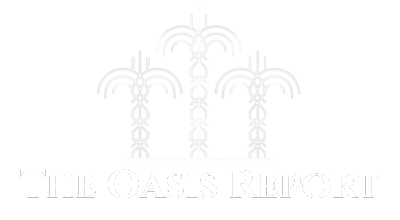A US sovereign downgrade by Moody’s has exacerbated investor worries about a looming debt time-bomb that could spur bond market vigilantes who want to see more fiscal restraint from Washington. The ratings agency cut America’s pristine sovereign credit rating by one notch on Friday, the last of the major ratings agencies to downgrade the country, citing concerns about the nation’s growing $36 trillion debt pile. The move came as Republicans who control the House of Representatives and the Senate seek to approve a sweeping package of tax cuts, spending hikes and safety-net reductions, which could add trillions to the US debt pile. Uncertainty over the final shape of the so-called “Big Beautiful Bill” has investors on edge even as optimism has emerged over trade. The bill failed to clear a key hurdle on Friday even as US President Donald Trump called for unity around the legislation.
“The bond market has been keeping a sharp eye on what transpires in Washington this year in particular,” said Carol Schleif, chief market strategist at BMO Private Wealth, who said that Moody’s downgrade may make investors more cautious. “As Congress debates the ‘big, beautiful bill’ the bond vigilantes will be keeping a sharp eye on making them toe a fiscally responsible line,” she said, referring to bond investors who punish bad policy by making it prohibitively expensive for governments to borrow. The downgrade from Moody’s, which follows similar moves from Fitch in 2023 and Standard & Poor’s in 2011, will “eventually lead to higher borrowing costs for the public and private sector in the United States,” said Spencer Hakimian, founder of Tolou Capital Management in New York.
Even so, the ratings cut was unlikely to trigger forced selling from funds that can only invest in top-rated securities, said Gennadiy Goldberg, head of US rates strategy at TD Securities, as most funds revised guidelines after the S&P downgrade. “But we expect it to refocus the market’s attention on fiscal policy and the bill currently being negotiated in Congress,” Goldberg said.
FOCUS ON BILL
One question is how much pushback there will be in Congress over whether fiscal principles are being sacrificed, said Scott Clemons, chief investment strategist at Brown Brothers Harriman, adding that a bill that shows profligate spending could be a disincentive to add exposure to long-dated Treasuries. The Committee for a Responsible Federal Budget, a nonpartisan think tank, estimates the bill could add roughly $3.3 trillion to the country’s debt by 2034 or around $5.2 trillion if policymakers extend temporary provisions. Moody’s said on Friday successive administrations have failed to reverse the trend of higher fiscal deficits and interest costs, and it did not believe that material reductions in deficits will result from fiscal proposals under consideration.
Concern shows up in market pricing. A recent increase in the 10-year Treasury term premium – a measure of the return investors demand for the risk of holding long-dated debt – is partly a sign of underlying fiscal worry in the market, said Anthony Woodside, head of fixed income strategy at Legal & General Investment Management America. Woodside said the market was “not assigning much credibility” to the deficit being brought down in a material way. Treasury Secretary Scott Bessent has said the administration is focused on containing benchmark 10-year yields. The yield, last seen at 4.44%, is about 17 basis points below where it was before Trump took office in January.
“Certainly you could see a reaction in yields to a pretty substantial increase in the deficit at a time when we’re already running pretty significant deficits,” said Garrett Melson, portfolio strategist with Natixis Investment Managers Solutions.
A White House spokesperson dismissed concerns around the bill. “The experts are wrong, just as they were about the impact of Trump’s tariffs, which have yielded trillions in investments, record job growth, and no inflation,” said Harrison Fields, special assistant to the President and principal deputy press secretary, in a statement.
The White House characterized the Moody’s downgrade as political. White House communications director Steven Cheung reacted to the move via a social media post on Friday, singling out Moody’s economist, Mark Zandi, and calling him a political opponent of Trump. Zandi, who is chief economist at Moody’s Analytics, a separate entity from the ratings agency, declined to comment.
Some in the market believe the fiscal outlook will improve with the tax package compared to earlier expectations, due to tariff revenues and spending offsets. Barclays now estimates the cost of the bill to increase deficits by $2 trillion over the next 10 years compared to expectations of around $3.8 trillion before Trump took office.
X FACTOR? Urgency is mounting as key deadlines approach. House Speaker Mike Johnson has said that he wants his chamber to pass the bill before the US Memorial Day holiday on May 26, while Bessent has urged lawmakers to raise the federal government’s debt limit by mid-July. The US government reached its statutory borrowing limit in January and began employing “extraordinary measures” to keep it from breaching the cap. Bessent has indicated the government could hit the so-called X-date – when it runs out of cash to meet all its obligations – by August.
Investor nervousness around the debt limit has started to show up. The average yield on Treasury bills due in August is higher than the yield of bills with adjacent maturities.
While there is broad agreement within the Republican Party to extend Trump’s 2017 tax cuts, there is a divide on how to achieve spending cuts that would help offset revenue loss.
The room for manouvre on spending cuts is limited. Mandatory spending, including on social welfare programs that Trump has pledged not to touch, accounted for a vast majority of total budgetary spending last year.
A politically viable fiscal package will likely lead to wider deficits in the near term, and at the same time it won’t provide a meaningful fiscal boost to the economy, said Michael Zezas, a strategist at Morgan Stanley, in a note published last week.
Anne Walsh, chief investment officer at Guggenheim Partners Investment Management said that without a real process in Washington aimed at significantly resetting spending levels, a meaningful improvement in the US fiscal path is unlikely.
“This is an unsustainable course that we’re on,” she said.



